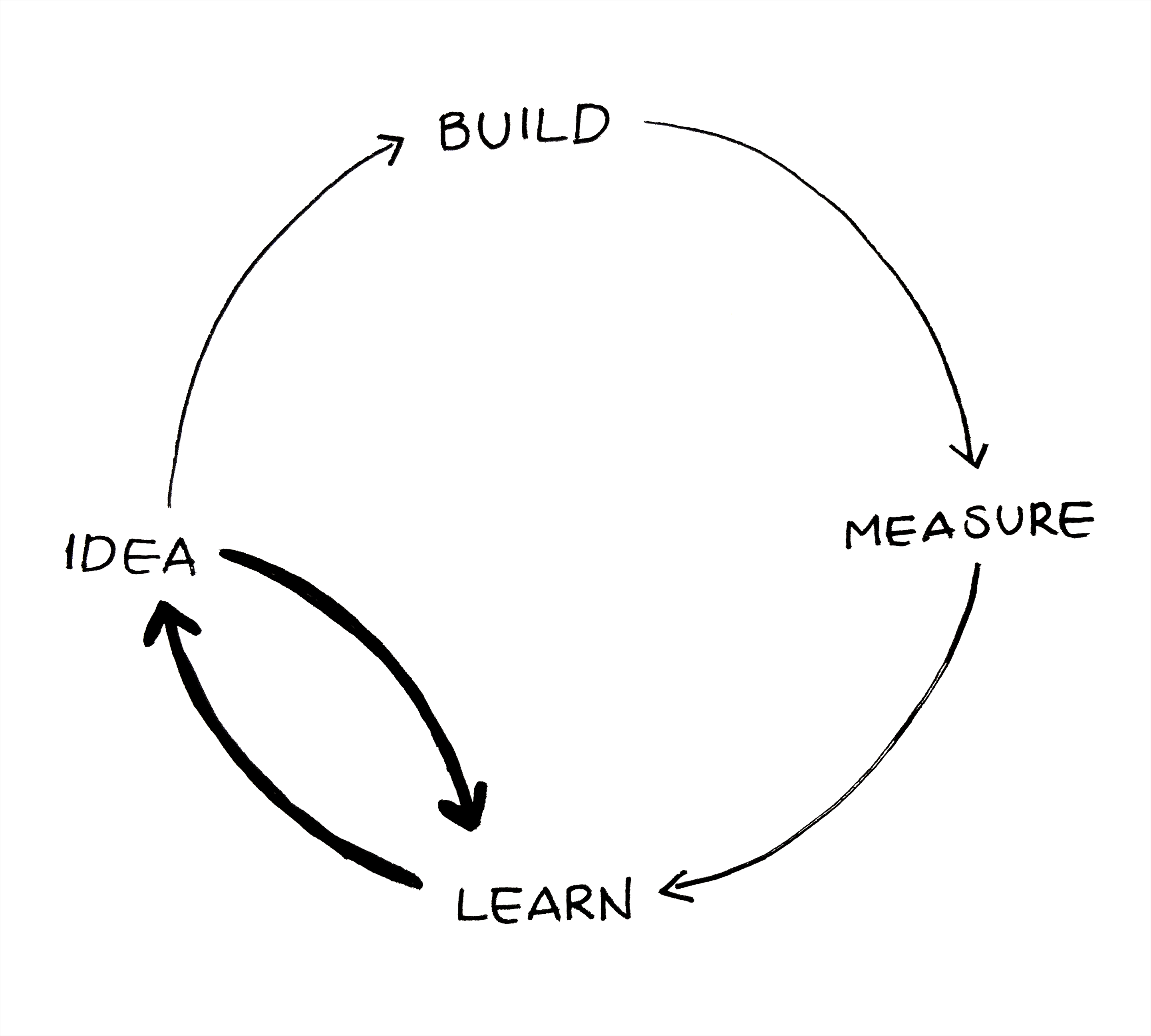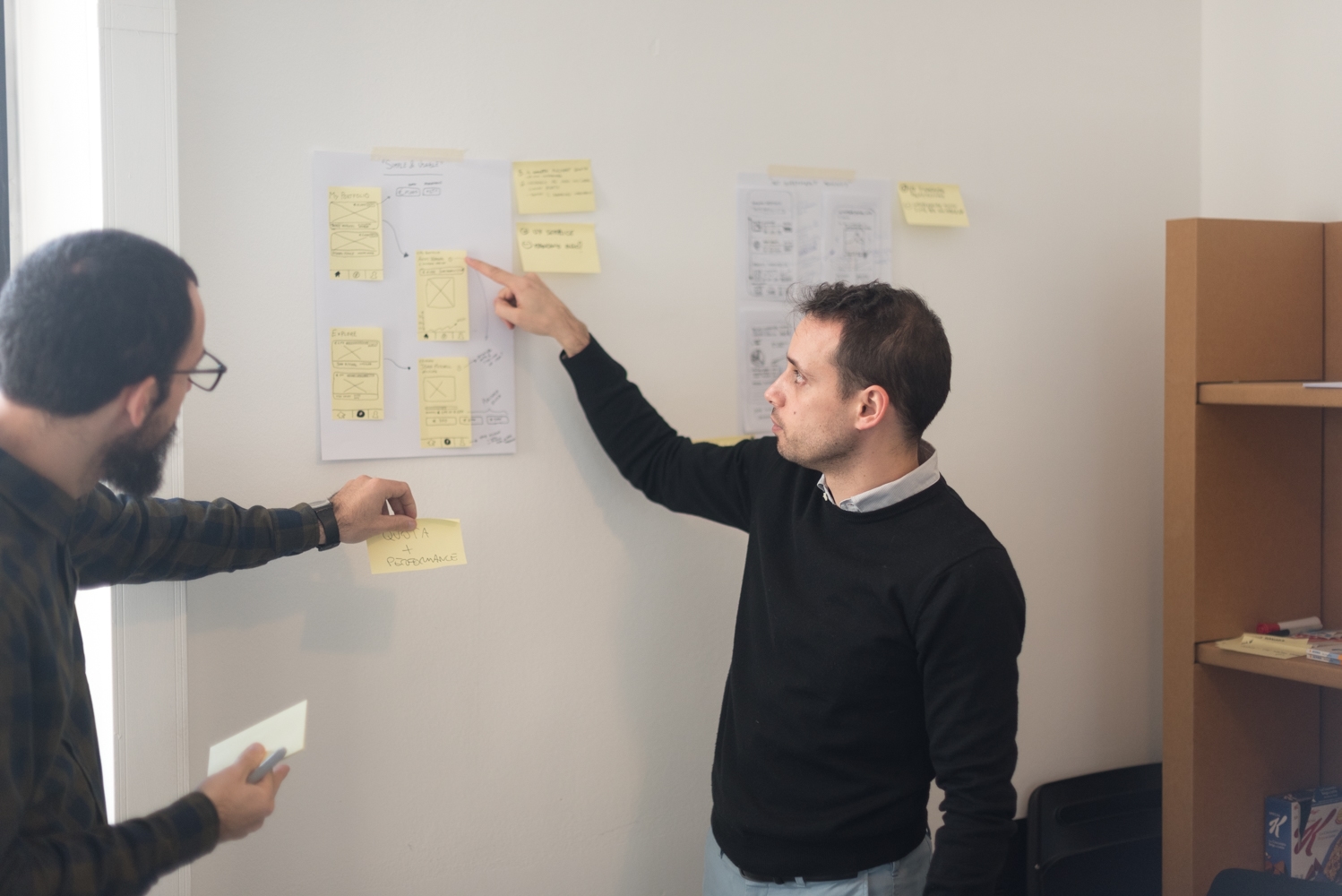Creating an innovative product can be a difficult challenge to face.
At Moze, we are involved in working on the digital projects of startups and companies of all sizes. In the field of innovation, the route to take to construct a successful product is not always straightforward. In some cases, our customers want help in understanding the validity of a new product idea. Other times, they ask for our help because within their team there are different opinions on what is the most effective solution for solving a specific problem of users for whom the product is intended.
For some years, at Design Spirit, we have found a particularly useful and effective process, which allows key people involved in a project to actively contribute to the design of a new solution by bringing their creativity into play, that is, the ability to use imagination to solve a problem.

Designed within Google Ventures (Google's investment fund) and described in Jake Knapp's book Sprint, Design Sprint is a process that allows you to test your ideas, define the fundamental characteristics of the product to be made, build a prototype and test it with potential users in just five days.
We have carried out many Design Sprints so far, supporting customers with very different needs. But how do you know when you should (or should not) do a Design Sprint?
"The bigger the challenge, the better the Sprint" — Jake Knapp
In our experience, Design Sprint has proven particularly effective in some specific situations. We describe them and offer concrete examples.
1. The stakes are high
We used the Design Sprint to help a company manager decide, in a few days, whether the startup project he wanted to dedicate himself to could have a sufficiently high success potential to justify the choice to give up his job in the company and devote all his time and most of his savings to starting a new business.
2. Little time available
The management of an Italian banking group had decided that the paper magazine produced by the holding company should give way to a new online publishing hub. A few months after the publication of the last issue of the magazine, the editorial staff was still not clear what the most appropriate form could be for the same content online that had previously been published in the magazine and how this content would have to change to be published on the web. Design Sprint helped our customer's team to make the main design choices quickly and provide us with the input needed to develop the new digital magazine rapidly.
3. Team can't reach agreement
The team of one of the most influential beauty brands in Italy wanted to create a mobile app intended for their target audience. Various team members had proposed possible concepts for the new digital product, all interesting but very different from each other. Design Sprint allowed us to check which of the ideas put forward would be most appreciated by real users of the brand and thus define the product concept to be developed.

Before starting
It is advisable to define some elements in advance to use Design Sprint effectively.
- Define the challenge to be tackled, to align participants' expectations and facilitate understanding of the problem to be solved.
- Identify the operational team, choosing people with different skills based on your goals (usually strategy, design and technology).
- Select a facilitator who will guide the activities for the duration of the Design Sprint.
- Choose a decision-maker, the person who will take decision-making responsibility at crucial moments in the Design Sprint.
- Organise the team's agenda, helping the people involved to dedicate some working days to the Design Sprint.
During the workshop
Let's see how the five days that make up the Design Sprint are divided:

Day #1 — Understanding
The purpose of the first day is to define the focus of the project, starting from understanding the problem to be solved and sharing the long-term goal.
Day #2 — Solutions
During the second day, each team member is called on to design their own possible solution and define a product concept. Allowing individuals to create their own design means the contribution of each person is maximised.
Day #3 — Decision
During the third day the various solutions are presented and observed by the whole team. Comments are shared about the possible ways to go. The decision-maker chooses the solution deemed the best. Sometimes a new solution is created that combines the most interesting aspects of the different concepts looked at.
Day #4 — Prototyping
The aim of the fourth day is to create a likely prototype of the chosen solution. We usually focus on the main navigation flow or on a marketing page (landing page) that presents the solution to the public.
Day #5 — Test
The last day is dedicated to the test, organised into individual prototype exploration sessions involving five potential users led by an interviewer. The interviewer and the respondent meet face to face in a room, while the rest of the Design Sprint team can follow the interviews live from an adjacent room.

After Design Sprint
How to interpret the outcome of the interviews?
Each interview carried out during the last day is usually analysed from different points of view to answer questions such as, for example:
- Did the respondents understand the product?
- Did the respondents spontaneously express interest in the product
- Did the respondents identify how their experience would be improved by using the product?
By asking the right questions, it is possible to identify the positive and negative elements that emerged most frequently in the answers of the respondents, on the basis of which strategic insights are produced useful for improving the product concept and deciding what steps to take after the Design Sprint.
What happens next?
In addition to summarising the various steps of the team's work over the course of five days, the final report of the Design Sprint provides suggestions on one or more directions that the project can take. The most common include:
- Proceed with the development and release of the first version (MVP, Minimum Viable Product) of the prototyped solution, improving it thanks to the insights obtained from the test.
- Carry out a new Design Sprint (complete or truncated) to design a better solution concept based on the elements collected during the test phase.
- Set aside the project due to obvious risk elements that emerged during the process, linked for example to development costs, the appreciation of the product by the potential public or the existence of competing solutions that had not been considered and that emerged from conversations with the potential users.
What have we learned?
Some key tips based on our experience with Design Sprint:
- Start with a test, to fully understand the methodology before using it in a real setting.
- Trust the process and follow every moment of the Design Sprint in a linear way.
- Simplify the process according to your needs.
- Keep an eye on the goal and avoid changing the focus of the Design Sprint during the work.
- Adopt the correct mindset: a shared vision and a collaborative atmosphere are fundamental ingredients for a successful Design Sprint.
Design Sprint is the ideal process for testing innovative ideas and reducing the risks inherent in the development of a new product, a methodology within the reach of every team enthusiastic to face a new common challenge. Go ahead and try it!
This post was originally published on Talent Garden blog.

